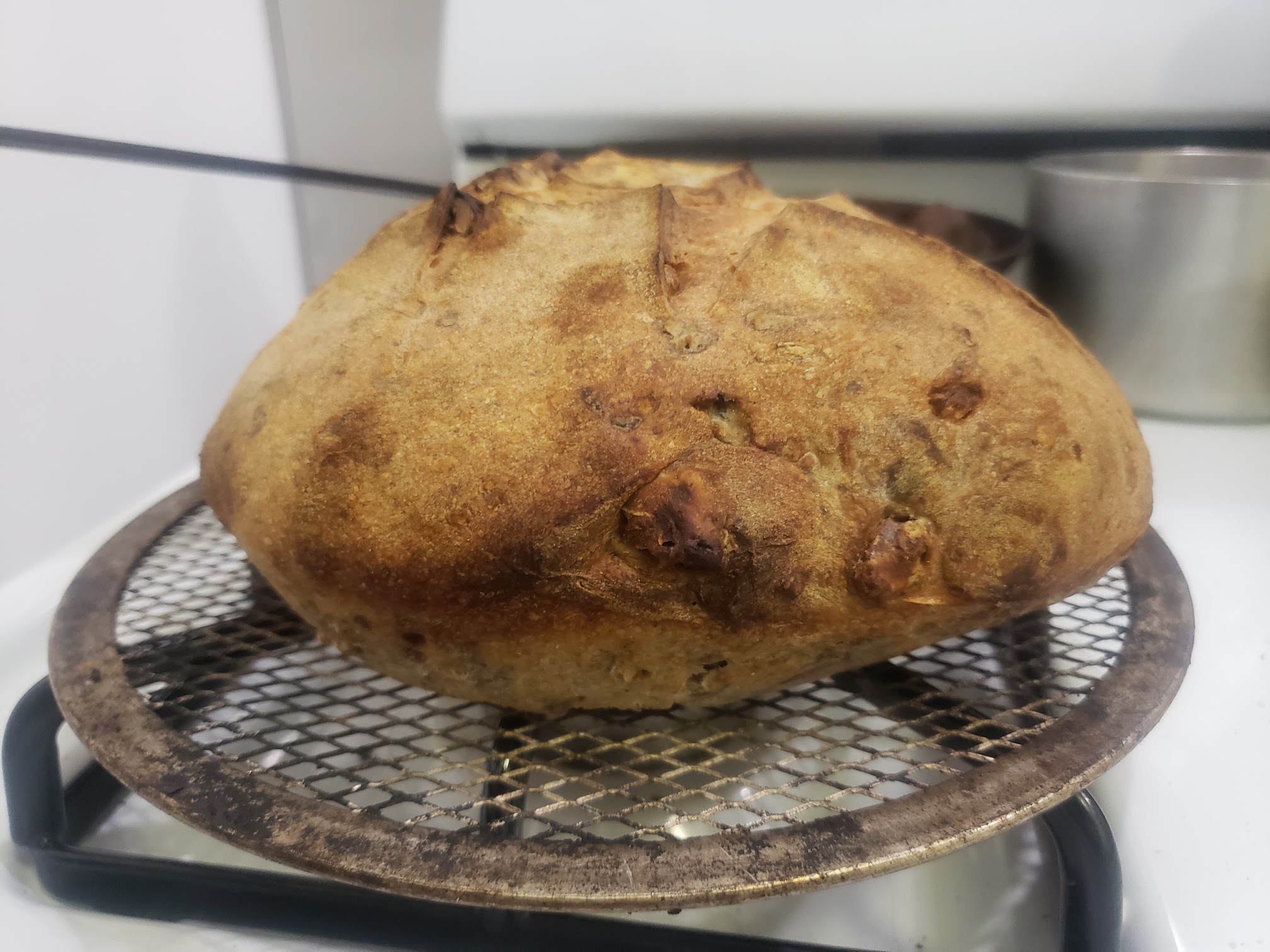June 10, 2022 - 5:42am

Baking sourdough bread in a Garland Master 200 convection gas oven

So my local bakery is letting me test drive their oven. Garland master 200. My bread are coming out looking like stewie' head on family guy. How do i correct this?? The crumb is wonderful but this shape just won't do.
I put a tray with lave rocks at the bottom but I don't think it's producing enough steam.
I'm also now sure if there's a way to close the venting to keep the steam in.
The owner of the bakery uses it to me cookies and pastries but not bread.
The crumb came out wonderful but the crust is not where It needs to be and looks more like a football
Any suggestions?


(Welcome to TFL! I see from your Track tab that this is your first post.)
Try using an enclosed baking vessel, such as a dutch oven or a cloche.
Another possibility is an inverted steel bowl covering the dough on a baking stone.
What's your recipe and process?
That doesn't look like it was baked on a flat surface... was it enclosed somehow?
It just balloned up like that in the oven
I think covering it then would be your best bet. Dutch oven, inverted bowl, etc.
@River,
The steam gets quickly vented in a gas oven. So the air is still dry.
And if the steam is generated underneath the baking surface, it rises and cools the underside of the baking surface or stone. Pre-heated baking sheet or stone = 450 F. Rising steam = 212 F. (Water molecules H2O weigh less than air, O2 and N2, so "cool" steam will still rise in "hot" air.)
The upper (tops and sides) exposed crust dries and sets (hardens) quickly, so expansion can't go upward very well.
The bottom crust, not exposed to air, stays pliable/stretchy longer, so that is where the internal dough expansion goes, downward, inflating the dough sack like a football and lifting it off the baking surface.
Sometimes, bakers get what we term "bottom blow out" and the lower crust ruptures and the inner dough comes out like a hernia.
An upper heating element, or broiler element, sets that top crust quickly, and can create a "side blowout."
HTH.
Yes I agree with Dave, the gas oven is venting any steam that you are generating and thus the top crust is setting too soon. Since the top crust cannot expand the dough has to expand from below, this is the typical shape of bread when this happens.
Benny